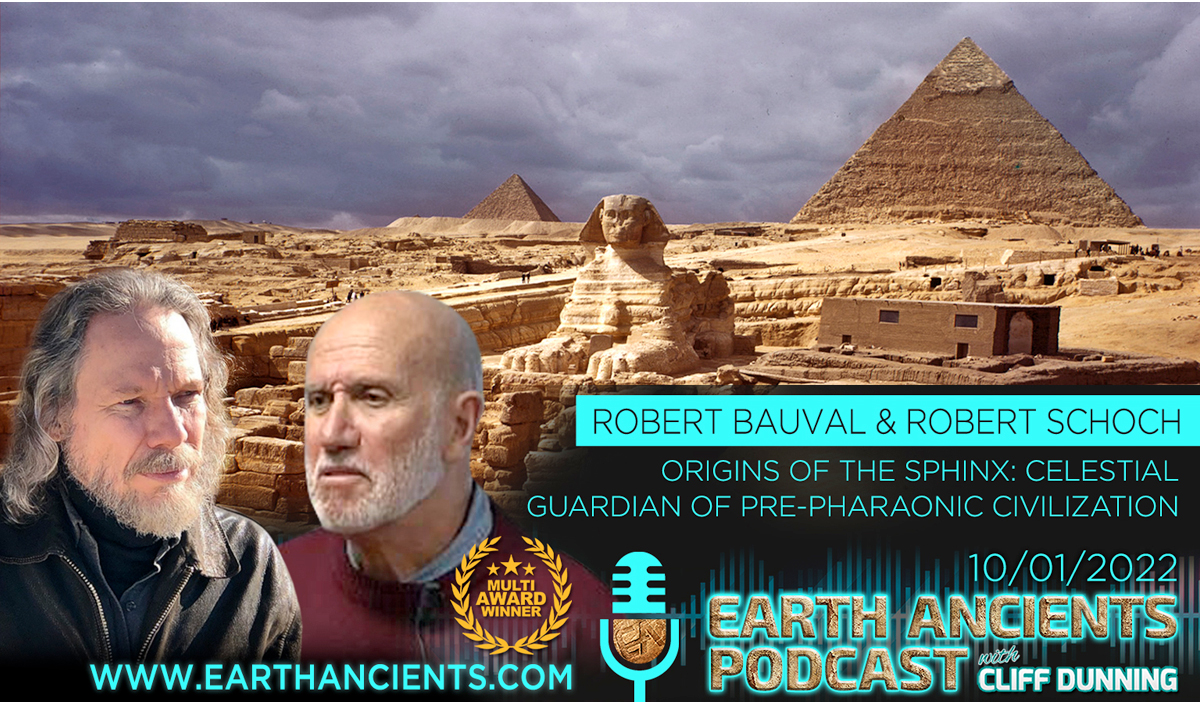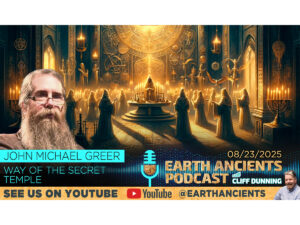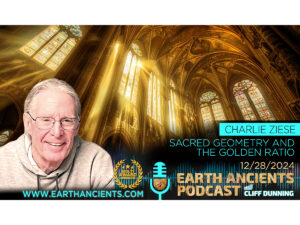Robert Bauval & Dr. Robert Schoch: The Origins of the Sphinx
New research and evidence that the Sphinx is thousands of years older than previously thought
Contrasts what Egyptologists claim about the Sphinx with historical accounts and new research including reanalysis of seismic studies and updates to Schoch’s water weathering research and Bauval’s Orion Correlation Theory
Examines how the Sphinx is contemporaneous with Göbekli Tepe, aligned with the constellation Leo, and was recarved during the Old Kingdom era of Egypt
Reveals that the Sphinx was built during the actual historical Golden Age of ancient Egypt, the period known in legend as Zep Tepi
No other monument in the world evokes mystery like the Great Sphinx of Giza. It has survived the harsh climate of Egypt for thousands of years and will remain long after our own civilization is gone. According to orthodox Egyptology, the Sphinx was built around 2500 BCE as a memorial to the pharaoh Khafre. Yet this “fact” has scant to no supportive evidence. When was the Sphinx really built and, most importantly, why?
In this provocative collaboration from two Egyptology outsiders, Robert M. Schoch, Ph.D., and Robert Bauval combine their decades of research to show how the Sphinx is thousands of years older than the conventional Egyptological timeline and was built by a long forgotten pre-Pharaonic civilization. They examine the known history of the Sphinx, contrasting what Egyptologists claim with prominent historical accounts and new research, including updates to Schoch’s geological water weathering research and reanalysis of seismic studies. Building on Bauval’s Orion Correlation Theory, they investigate the archaeoastronomical alignments of the monuments of the Giza Plateau and reveal how the pyramids and Sphinx were built to align with the constellations of Orion and Leo. Analyzing the evidence for a significantly older construction phase at Giza and the restoration and recarving of the Sphinx during the Old Kingdom era, they assert that the Sphinx was first built by an advanced pre-Pharaonic civilization that existed circa 12,000 years ago on the Giza Plateau, contemporaneous with the sophisticated Göbekli Tepe complex.
The authors examine how the monuments at Giza memorialize Zep Tepi, the Golden Age of legend shown here to be an actual historical time period from roughly 10,500 BCE through 9700 BCE.
Moving us closer to an understanding of the true age and purpose of the Great Sphinx, Schoch and Bauval provide evidence of an early high civilization witnessed by the Great Sphinx before the end of the last ice age.
Robert M. Schoch, Ph.D., a tenured faculty member at Boston University, earned his doctorate in geology and geophysics at Yale University in 1983. Known for his research on ancient civilizations, he is the author of numerous books, including Origins of the Sphinx. Catherine Ulissey, a 20-year ballet and Broadway dance veteran, earned her B.A. from Emerson College in 2002. Married to Dr. Schoch in 2010, she enjoys contributing to his research while teaching her art, formerly for Harvard University’s dance program and more recently for Wellesley College.
Egyptian-born Robert Bauval began studying Egyptology in 1983. His first book, The Orion Mystery, was published in 1994, becoming a number-one bestseller translated into more than 25 languages. His research has been featured in documentaries throughout the world. He lives in Torremolinos, Spain. Thomas Brophy, Ph.D., is an astrophysicist who has worked with NASA, including as a member of the Voyager II spacecraft instrument teams. The author of several books, including The Origin Map, and numerous published articles in scientific journals, he lives in Encinitas, California.










